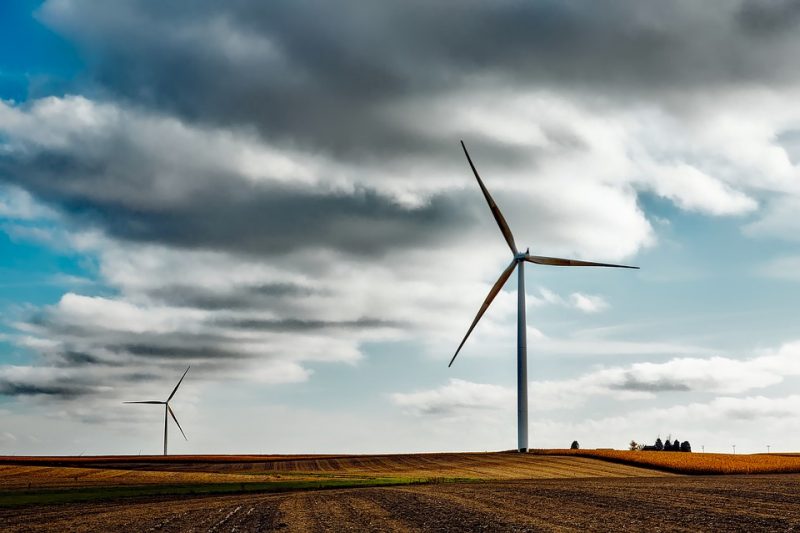
Through our sheer abundance, human activity is a pervasive influence on all ecosystems. Any influence can be appraised through cost-benefit analysis, which, I would suggest, should not be limited to economic considerations.
Cost-benefit analyses face major challenges of course in reaching an agreement as to what counts as cost and benefit and in evaluating the relative values of costs and benefits. Nevertheless, a cost-benefit framework brings into focus the factors that need to be considered in a decision process and draws attention to issues that require greater understanding to achieve consensus and implementation of a decision.
Intentional anthropogenic alteration of landscape presumably has some benefit in mind, but likely entails costs also. Some alterations are perhaps best thought of as permeating at least extensive parts of the environment, while others may be spatially localized. An example of the latter is a wind farm, which has obvious benefits of energy production and reduction of the harmful effects of burning fossil fuels. The costs of altering the landscape locally in the installation of a wind farm may include aesthetic considerations of the local human community and impacts on wildlife. It is now well established that birds and bats are killed in considerable numbers through collisions with wind turbines. Assuming such mortality is recognized as a cost of a wind farm, how can it be evaluated?
A first step towards quantifying the cost of a given wind farm in avian and chiropteran wildlife is estimating the number of a given species killed annually in that wind farm. Such estimation involves issues of sampling and detection, both of which have received extensive attention in the biological and statistical literature.
But the number killed of any species in a wind farm per annum is not necessarily an adequate measure of the cost of the wind farm as regards this species. Our involvement in a study of the interaction between golden eagles (Aquila chrysaetos) and the Altamont Pass Wind Resource Area (APWRA) in California (Hunt, W. G., Wiens, J. D., Law, P. R., Fuller, M. R., Hunt, T. L., Driscoll, D. E. & Jackman, J. E. 2017 Quantifying the demographic cost of human-related mortality to a raptor population. PLoS One 12(2):e0172232 (22 pp.) DOI:10.1371/journal.pone.0172232), stimulated by conversations with the principal investigator Grainger Hunt, suggested that a spatially localized alteration of the landscape like a wind farm may impact individual eagles that never enter the wind farm itself.
For example, Hunt et al. found that eagles killed in the wind farm were predominantly subadults. But where do they come from? If breeding pairs never enter the wind farm, but their offspring do as subadults, whether coincidentally or in search of prey such as ground squirrels, the breeding pair pays a demographic cost to the wind farm if their offspring perish there.
Hence, to quantify the cost of the wind farm paid by, for example, golden eagles, it seems appropriate to translate the number killed annually in the wind farm into a per capita mortality rate. But that conversion requires a population to be specified for “per capita” to be meaningful. For golden eagle fatalities in the APWRA, Hunt et al. estimated the minimum population required to be just self-sustaining and suffer the annual mortality rate due to collisions with turbines in the APWRA, concluding that the APRWA, distributed across about 142 sq. kms., consumed the excess production beyond maintenance of between 64 and 90% of the golden-eagle breeding pairs in the roughly 5500 sq. kms. of the Diablo Mountain Range. While this estimation does not identify the smallest demographically-closed population sourcing the fatalities in the APWRA, it does indicate that the population is far more extensive than just the eagles residing near the farm itself.
In “Evaluating Anthropogenic Landscape Alterations as Wildlife Hazards, with Wind Farms as an Example” (Ecological Indicators 94, 380–385, 2018. DOI: 10.1016/j.ecolind.2018.06.061), by Peter R Law and Mark Fuller, we formulated a conceptual scheme for evaluating an anthropogenic landscape alteration as a hazard to wildlife. The scheme consists of three components: understanding how an anthropogenic landscape alteration acts as a hazard to wildlife; estimating an annual mortality rate; and converting that rate into a demographically meaningful per capita mortality rate. We illustrated this scheme with the literature on wind farms.
As regards the first component, turbine strikes of birds and bats result from an interaction between the physical characteristics of a particular wind farm and physical and behavioral characters of birds and bats. Investigations of this interplay can result in remedial solutions for existing wind farms and designs for future wind farms with less harmful impacts on birds and bats. Thus, this component can contribute to further cost-benefit analysis, of either modification to existing or design of proposed structures. The second two tasks directly aim to quantify a cost in wildlife to a landscape alteration with a measure that is at least demographically meaningful and, thus, more useful in a cost-benefit analysis.
These findings are described in the article entitled Evaluating anthropogenic landscape alterations as wildlife hazards, with wind farms as an example, recently published in the journal Ecological Indicators. This work was conducted by Peter R. Law from Nelson Mandela University and Mark Fuller from the U.S. Geological Survey.









